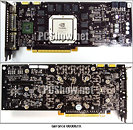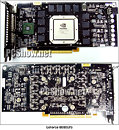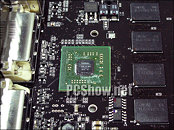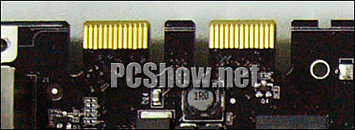zekrahminator
McLovin
- Joined
- Jan 29, 2006
- Messages
- 9,066 (1.32/day)
- Location
- My house.
| Processor | AMD Athlon 64 X2 4800+ Brisbane @ 2.8GHz (224x12.5, 1.425V) |
|---|---|
| Motherboard | Gigabyte sumthin-or-another, it's got an nForce 430 |
| Cooling | Dual 120mm case fans front/rear, Arctic Cooling Freezer 64 Pro, Zalman VF-900 on GPU |
| Memory | 2GB G.Skill DDR2 800 |
| Video Card(s) | Sapphire X850XT @ 580/600 |
| Storage | WD 160 GB SATA hard drive. |
| Display(s) | Hanns G 19" widescreen, 5ms response time, 1440x900 |
| Case | Thermaltake Soprano (black with side window). |
| Audio Device(s) | Soundblaster Live! 24 bit (paired with X-530 speakers). |
| Power Supply | ThermalTake 430W TR2 |
| Software | XP Home SP2, can't wait for Vista SP1. |
Pictures of the NVIDIA GeForce 8800GTS and 8800GTX show what looks like two graphics processors. However, the smaller second chip is dedicated to "NV I/O".




View at TechPowerUp Main Site
There are also specifications showing the power requirements for the NVIDIA GeForce 8800GTS and GTX. The 8800GTS will require 26 amps on the 12 volt rail, and the 8800GTX will require a whopping 30 amps on the 12 volt rail. The 8800GTX also has a second SLI bridge, which may link to a future physics solution from NVIDIA.It turns out that the small chip on the Geforce 8800 cards is an Nvidia NVIO chip. It provides dual 400MHz RAMDAC and Dual - Dual Link DVI output, TV Out and HDCP. Our informative friends call the chip External Video I/O Chip or simply External RAMDAC. We don't have any idea why Nvidia needed that, as RAMDAC has been normally part of the chip for generations.



View at TechPowerUp Main Site







 (overclocked)
(overclocked)
 .
.